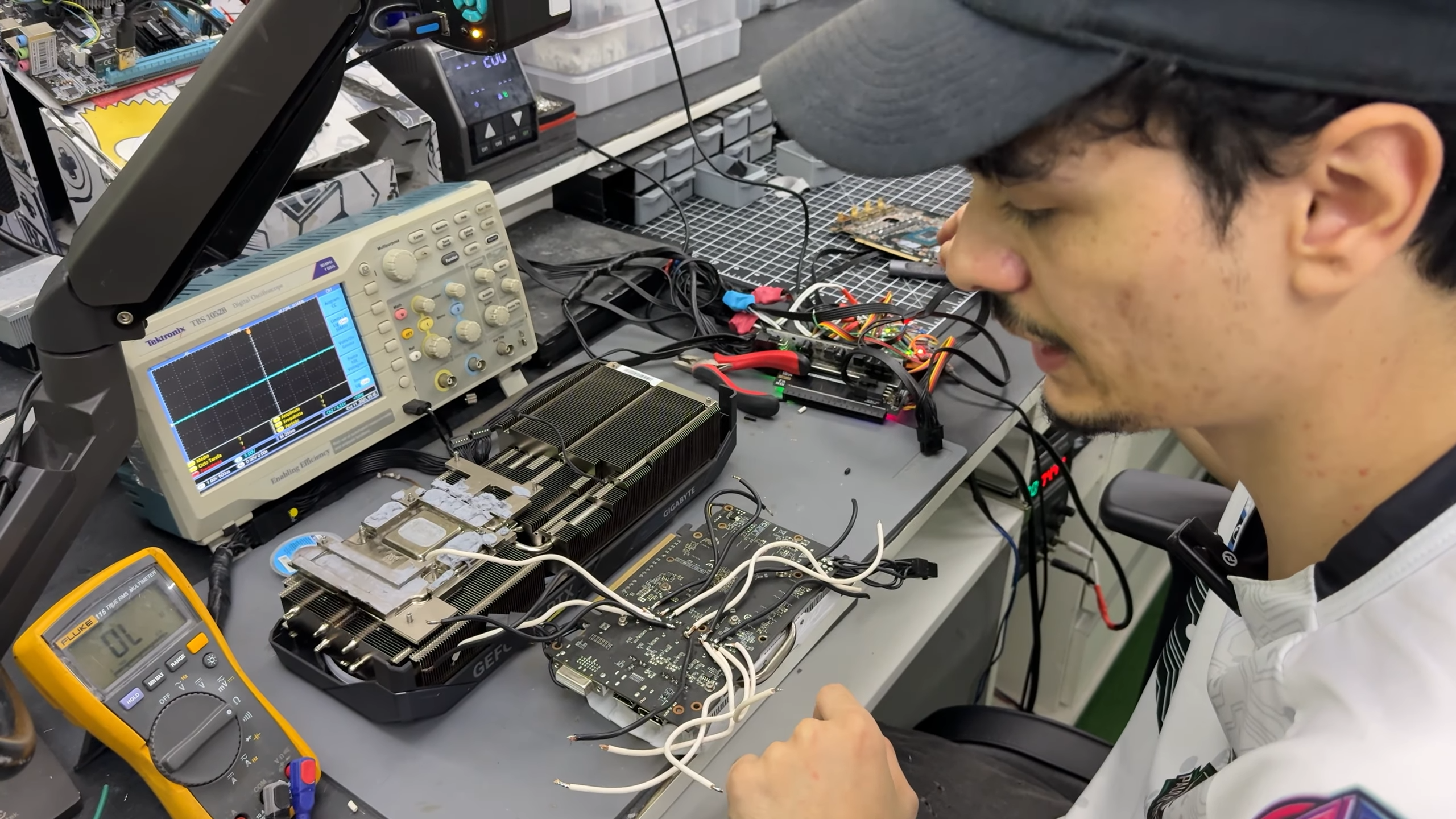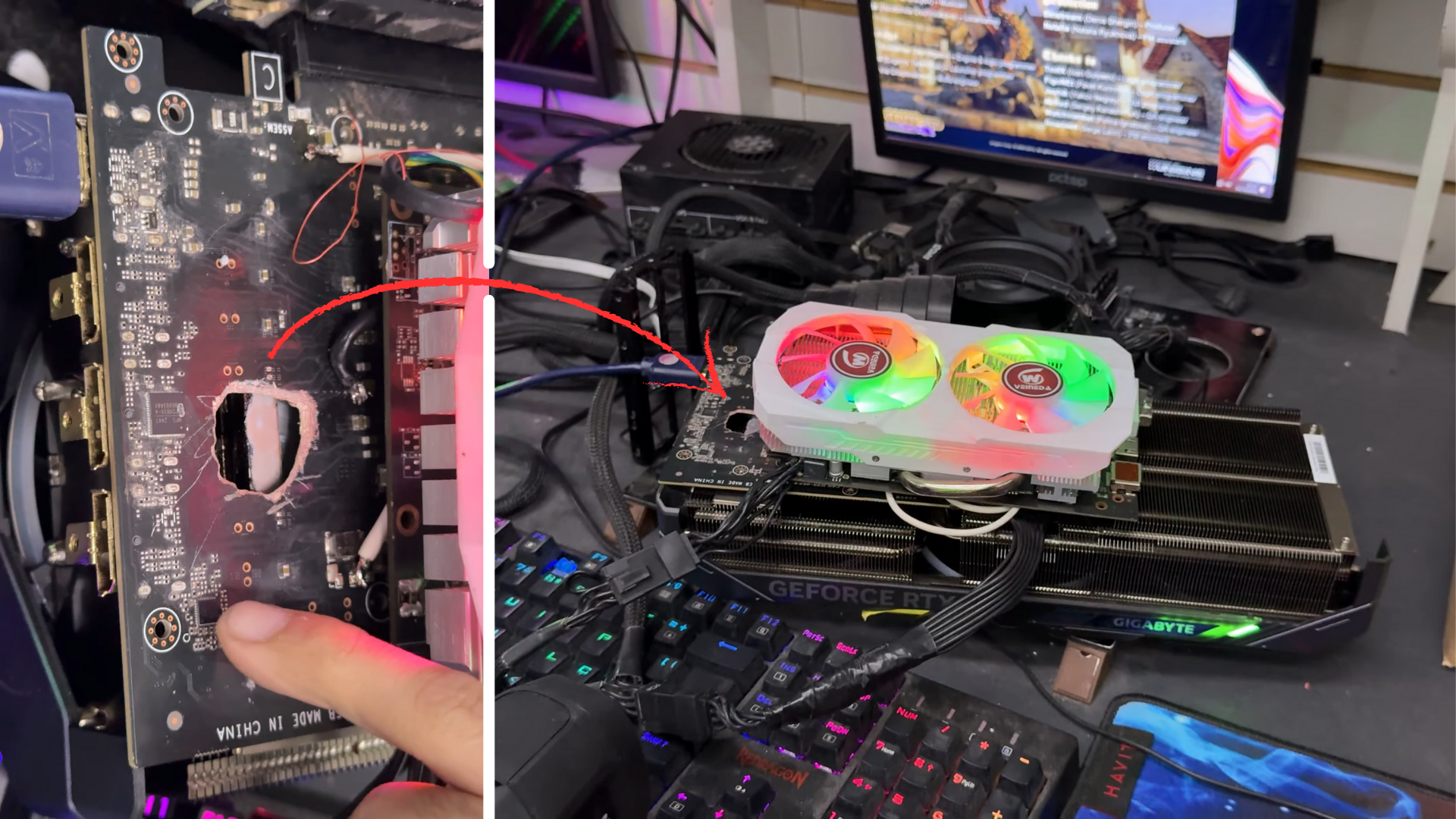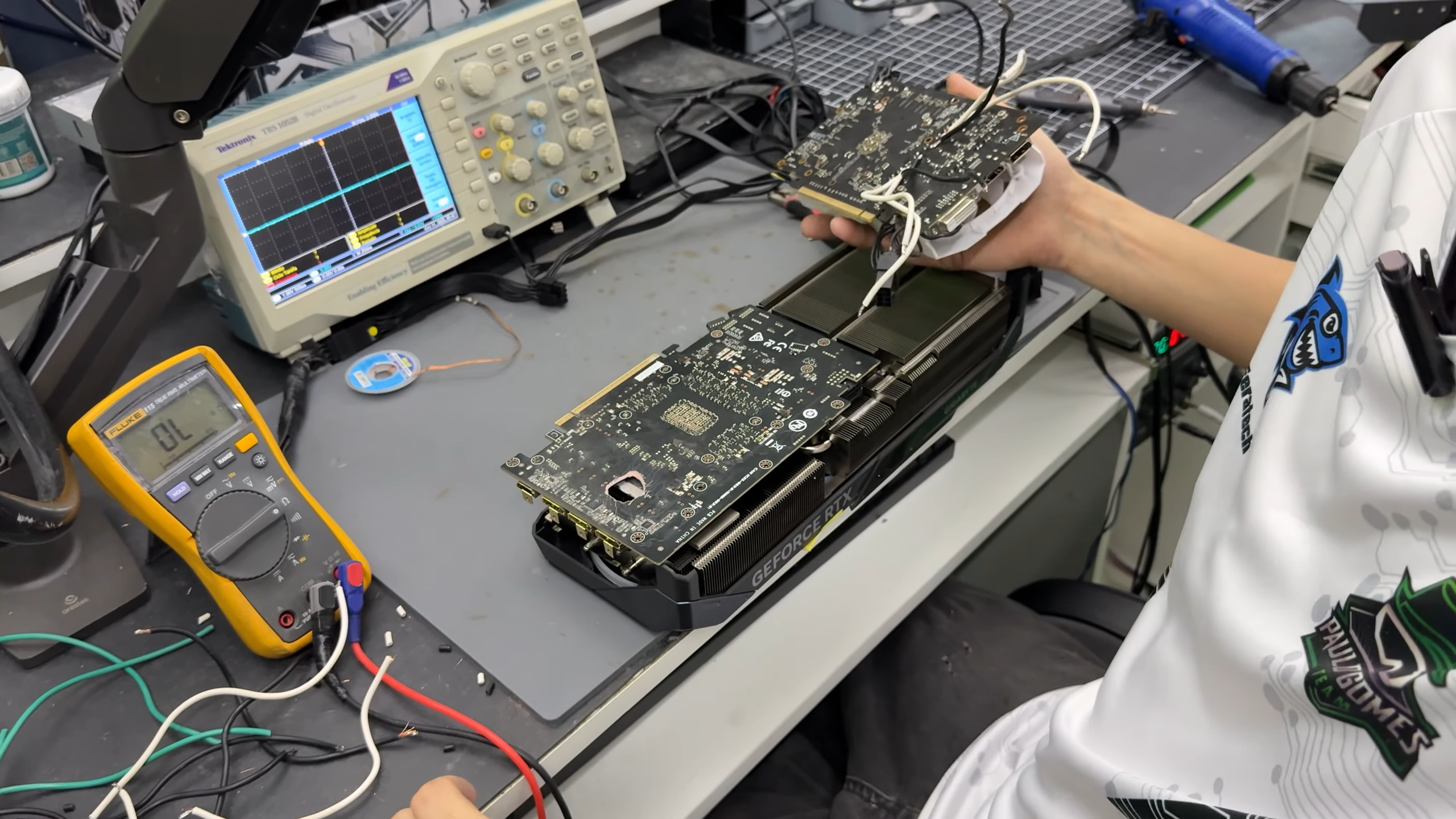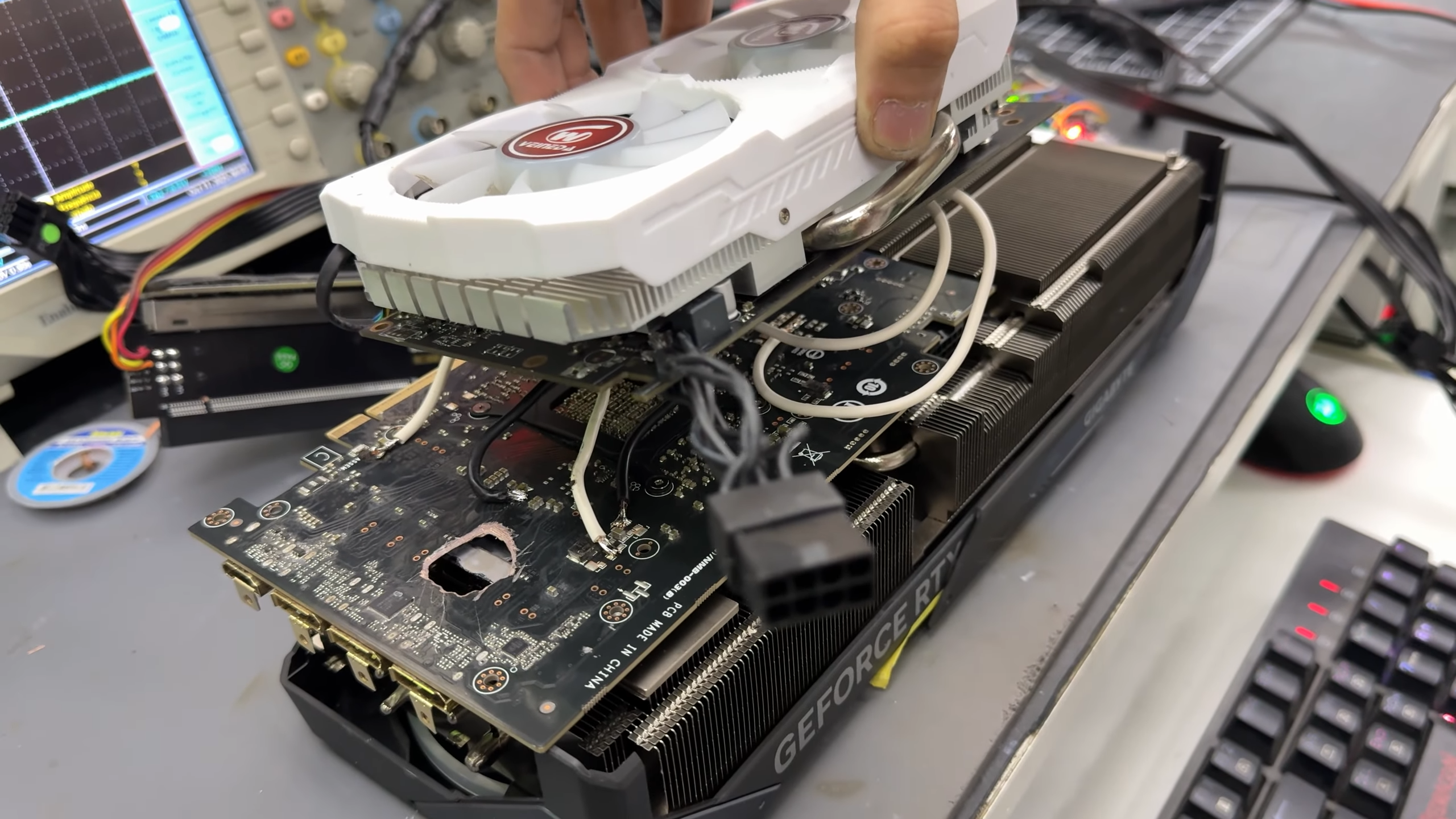We've seen countless repair stories, shunt mods, and even custom-designed GPUs before, but nothing quite compares to a project like this. Marrying together one of the most iconic graphics cards ever released — AMD's RX 580 — with a modern-day heavyweight like the RTX 5070 Ti in the most unexpected way possible, Brazilian YouTuber and technician Paulo (from Paulo Games) has just performed a miracle. He sacrificed the soul of a GPU to breathe life into another, birthing a Frankenstein monstrosity that actually works.
RTX 5070TI COM BURACO - EXPERIENCIA MALUCA DO CANAL. - YouTube

See, the core was fine, and even the memory; it was only the power delivery systems that were affected, which implied a way out was possible — all you needed was some (insanely) clever bit of circuitry work. Aided by schematics and a few wires, just bridge together the lost traces, jump a few components, and make sure nothing short-circuits. Easy, right? Wrong.
There were no core voltages in the 5070 Ti, and the card only showed signs of life when it was tricked into supplying current to the PCIe power and memory voltage lanes.
This is where the RX 580 makes its entry. It's a donor board, so it actually doesn't have a GPU, but it does have a working power delivery system with VRMs that can serve as the lifeblood for another card. Thus, we begin the surgery, carefully siphoning power from the RX 580 to the RTX 5070 Ti's main voltage lines: MSVDD and NVDD.
Paulo initially planned to solder 14 power wires between both cards, but then reduced that number down to just six after some experimentation, and also added a 3V line for PEX (logic enable). Lastly, an aftermarket GPU cooler was mounted on the RX 580's PCB — which itself was sitting on top of the 5070 Ti — to keep this incendiary apparatus under control.

It's worth noting that AMD and Nvidia handle power management very differently, so that introduced another layer of challenge (and risk); therefore, the wires connecting the VRMs were shielded heavily to ensure they could handle the heat from the high voltage flowing through the cards.
Following the necessary precautions, which included a fire extinguisher, Paulo also repaired broken video output traces so the card could actually be tested. Once everything was plugged in, our "Brasília" (Frankstein in Portuguese) GPU actually powered on, posts, drawing around ~19W upon startup.
After fiddling around with video drivers, they achieved a stable image, which confirms the experiment worked. They stopped before doing any stress-testing because that would certainly melt the wires, or at least impose some level of serious danger. This is where Paul teases a second part where all warnings are thrown out the window in the name of science — or, in other words, refining the makeshift power delivery system to actually make it stable enough to play games.

Follow Tom's Hardware on Google News, or add us as a preferred source, to get our latest news, analysis, & reviews in your feeds.

 1 month ago
33
1 month ago
33










 English (US) ·
English (US) ·